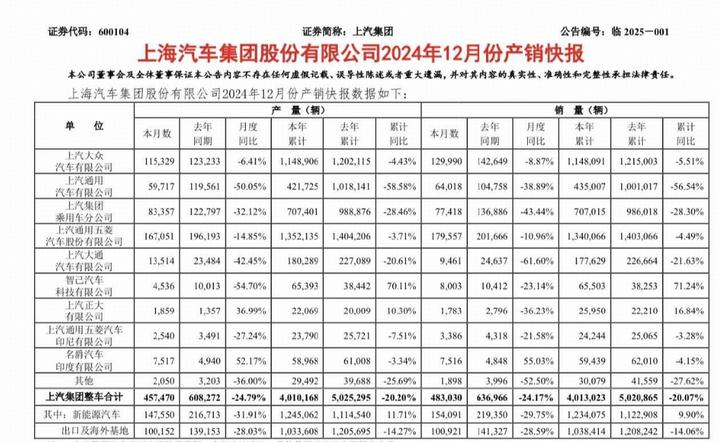SAIC's Market Share Loss: A Turning Point in China's Auto Industry
SAIC Group’s sales dropped 20% to 4.013 million units in 2024, losing its 18-year reign as China’s top automaker to BYD, marking a significant shift in China’s automotive landscape from traditional joint ventures to new energy vehicles.

The recent decline of SAIC Group, a titan in China’s automotive industry, represents a profound transformation in the country’s auto sector. With sales plummeting 20% to 4.013 million units in 2024, SAIC’s loss of market leadership to BYD marks the end of an era dominated by traditional joint-venture manufacturers.
SAIC’s challenges stem from several key factors. While the company invested heavily in marketing, spending over 10 billion RMB annually - surpassing many domestic competitors combined - this massive expenditure failed to translate into proportional market success. The company’s joint venture strategy, once a cornerstone of China’s automotive industry, has become increasingly problematic in the age of electric vehicles.
The company’s product portfolio tells a revealing story. SAIC’s Volkswagen and General Motors partnerships, which historically provided stable revenue streams, have struggled to adapt to the electric vehicle revolution. Meanwhile, SAIC’s self-developed brands like MG and Roewe, despite showing promise in areas like hybrid technology and AI integration, haven’t achieved the market penetration needed to offset losses in traditional segments.
Financial data from 2024 reveals the stark reality: while SAIC’s revenue reached 105.195 billion USD, its profit dropped to 1.992 billion USD - a 20% decline. This contrasts sharply with BYD’s performance, which saw both revenue and profit growth, highlighting the shifting dynamics in China’s automotive sector.
The transformation extends beyond SAIC to its supplier network. Traditional auto parts manufacturers aligned with joint ventures are struggling, while suppliers to new energy vehicle makers are thriving. This ripple effect throughout the supply chain underscores the fundamental nature of the industry’s transformation.
SAIC’s current predicament reflects a broader industry trend where traditional joint-venture models are giving way to innovative domestic manufacturers. The company’s SAIC-GM-Wuling subsidiary, particularly its Mini EV, shows promise in the electric vehicle market, but questions remain about whether this success can scale to offset losses in other segments.
The path forward for SAIC likely involves a dramatic restructuring of its business model. The company’s recent partnership with Huawei and increased focus on electric vehicle technology suggests recognition of the need for change. However, the challenge lies in executing this transformation while managing an extensive workforce and complex joint-venture relationships.
For China’s automotive industry, SAIC’s struggle represents more than just one company’s difficulties - it symbolizes the end of an era where joint ventures dominated the market. The future belongs to companies that can innovate in electric vehicle technology, develop strong domestic brands, and adapt to rapidly changing consumer preferences.